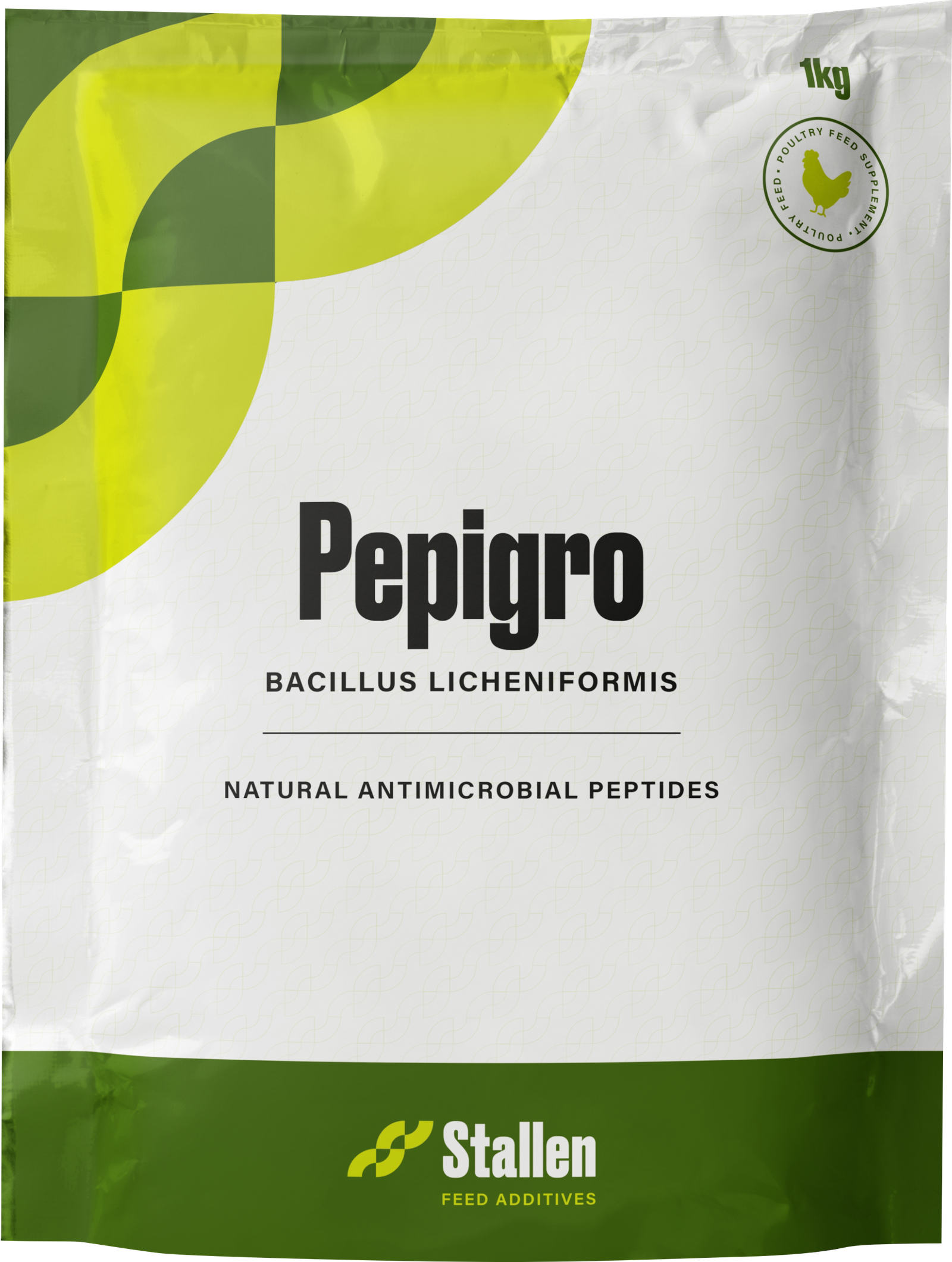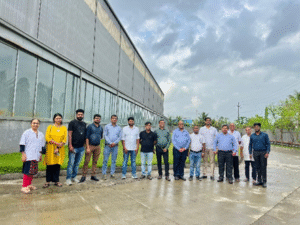Introduction
The poultry industry is a vital component of global agriculture, playing a crucial role in food security and the economy. However, the health and productivity of poultry are frequently challenged by a wide array of microorganisms, including both beneficial and pathogenic species. While pathogenic bacteria such as Clostridium perfringens, Salmonella, colibacillosis can lead to serious diseases like necrotic enteritis (NE), Salmonellosis and E. coli. The beneficial microorganisms are integral to maintaining intestinal health and optimizing growth performance (Tian et.al.2021).
Historically, the use of antibiotics in poultry feed has been an effective strategy for disease prevention and growth promotion. However, the long-term use of antibiotics has led to significant drawbacks, including the emergence of antibiotic-resistant bacteria and the accumulation of antibiotic residues in poultry products such as meat, eggs, and feed. These issues pose not only animal health concerns but also serious public health risks, prompting regulatory bans on antibiotic growth promoters in many countries. This shift has intensified the demand for natural, safe, and sustainable alternatives that can support animal health and production efficiency without adverse side effects (Quette et. al.2018).
Probiotics have emerged as promising alternatives to antibiotics in poultry nutrition. These “friendly” bacteria contribute to gut health by enhancing digestion, modulating the immune system, improving intestinal barrier function, and competing against pathogenic microorganisms. Among the various probiotic candidates, species of the Bacillus genus—particularly Bacillus licheniformis—have attracted increasing attention due to their spore-forming capabilities, environmental resilience, and broad-spectrum biological activities. B. licheniformis is “generally recognized as safe” (GRAS) and has demonstrated antimicrobial, antioxidant, and immunomodulatory properties, making it a multifunctional probiotic with diverse applications in poultry production. Recent studies have shown that dietary supplementation with B. licheniformis can significantly enhance growth performance, feed conversion efficiency, egg production, intestinal morphology, and microbial balance in poultry (Pan et.al.2022).
Bacillus licheniformis is a Gram-positive, spore-forming bacterium characterized by high temperature and stress resistance recognized for its probiotic and postbiotic benefits. It produces digestive enzymes such as protease, amylase, lipase, and cellulase, which enhance nutrient utilization. By depleting intestinal oxygen, it fosters anaerobic conditions that promote beneficial bacteria (Lactobacillus, Bifidobacterium) and suppress pathogens (Escherichia coli, Salmonella, Clostridium perfringens). In addition, B. licheniformis secretes bioactive metabolites, including bacteriocins, surfactins, licheniformins, and bacitracin, all of which possess antimicrobial properties (Giri et al. 2019). The bacteriocin, a 42-amino acid peptide (~4.7 kDa), exhibits strong α-helical conformation and acts by disrupting bacterial membranes and inhibiting intracellular processes such as nucleic acid and protein synthesis. These peptides not only suppress pathogens but also enhance host immunity by stimulating neutrophils, macrophages, mast cells, and NK cells, and inducing cytokine and chemokine production. Collectively, B. licheniformis improves feed digestibility, strengthens mucosal barrier function, supports gut microbiota balance, and enhances immune responses, making it a promising candidate for use in both animal nutrition and human health (Shleeva et.al.2023).
Objective of Study-
To evaluate the effect of PEPIGRO on the performance of commercial broilers reared on deep litter under field conditions.
MATERIALS AND METHODS
Experimental Design and Management
The trial was conducted at Harsh Broiler House -Bilaspur using Vencobb 430 straight run chicks (not sexed at hatchery) in three treatments of around 12000 birds in each treatment. A total of 36000 birds were considered for trial purpose. Feed Formulation used was same for all treatment groups except in T3 where PEPIGRO (Bacillus lincheniformis 3*109) was added at 300 gm per ton feed respectively in all stages. (Table.1). In the study, the energy level was equivalent to the standard requirements of broilers recommended in the Vencobb 430. The trial was carried out over a period of 42 days. The birds were fed ad lib feed and water was available all the time. Care was taken to provide good conditions by adopting strict biosecurity measures. The housing and vaccination procedures were same in both groups.
Table 1. Composition of basal diet for broiler chicks in control group for 3 phases.
| Broiler Feed Formulation (Control) | |||
| Raw Materials | Prestarter | Starter | Finisher |
| Maize | 625.15 | 652.75 | 686.65 |
| HiPro Soya | 335 | 300 | 260 |
| Soya Crude Oil | 6 | 14 | 23 |
| Limestone Powder | 8.5 | 8.5 | 8 |
| Dicalcium Phosphate | 10 | 10 | 8 |
| L Lysine HCI | 2.7 | 2.4 | 2.3 |
| DL Methionine | 3.3 | 3 | 2.7 |
| L Threonine | 1 | 1 | 1 |
| Salt | 2.5 | 2.5 | 2.5 |
| Soda Bi Carb | 1.5 | 1.5 | 1.5 |
| Choline Chloride 60% | 1 | 1 | 1 |
| Organic TM | 0.5 | 0.5 | 0.5 |
| Broiler Vitamin Premix | 0.5 | 0.5 | 0.5 |
| Coccidiostat | 0.5 | 0.5 | 0.5 |
| AGP | 0.05 | 0.05 | 0.05 |
| NSP Enzyme | 0.1 | 0.1 | 0.1 |
| Phytase 5000 | 0.1 | 0.1 | 0.1 |
| Feed Acidifier | 1 | 1 | 1 |
| Toxin Binder | 0.6 | 0.6 | 0.6 |
*The figures are in Kilograms.
The premix provided the following per kilogram of the diet: vitamin A, 6000 IU; vitamin D3, 2500 IU; vitamin B1, 1.75 mg; vitamin B2, 5.5 mg; vitamin B6, 4 mg; vitamin B12, 0.18 mg; vitamin E, 25 mg; vitamin K3, 2.25 mg; Cu, 7.5 mg; Mn, 60 mg; Fe, 75 mg; Zn, 60 mg; Se, 0.15 mg; biotin, 0.14 mg; NaCl, 3.7 g; folic acid, 0.8 mg; pantothenic acid, 12 mg; phytase, 400 U; nicotinic acid, 34 mg; chloride, 350 mg. *Nutrient levels were all calculated values.
Treatment Details-
T1: Control group fed basal diet
T3: Control group fed basal diet + PEPIGRO @300 g PMT
Parameters Studied-
- Body Weight gain was recorded weekly
- Feed Consumption recorded daily and leftover feed was adjusted in the other day quota to know actual intake.
- Mortality was recorded daily
- EEF calculated post harvesting of the flock
- FCR was calculated every week and post harvesting of the flock.
Result:
Effect of Pepigro on growth performance parameter in broiler.
Fig.1. Effect of different dietary treatments on Body Weights (g)

Conclusion: PEPIGRO supplementation at 300g/ton of feed (T3) resulted in a statistically significant 8.18% increase in broiler body weight compared to the control (T1), indicating improved growth performance.
Fig.2. Effect of different dietary treatment on Feed intake (g)

Conclusion: The broiler supplemented with PEPIGRO (T3) at 300g/ ton of feed had a feed intake of 4059 g, which is 6.59% higher than the control group (T1) with 3800 g feed intake. This increase in feed intake indicates that PEPIGRO supplementation positively influenced the birds’ feeding behaviour, likely by enhancing the palatability or nutrient availability of the diet.
Fig.3. Effect of different dietary treatment on Weekly Gain (g)

Conclusion: PEPIGRO (T3) supplementation in broiler diet at 300g/ton of feed resulted in the average percentage difference in weekly gain between T1 (Control) is approximately 6.22%. This indicates that PEPIGRO supplementation had a positive overall effect on growth performance, enhancing weight gain efficiency in broiler chickens.
Fig.4. Effect of different dietary treatment on Feed conversion ratio

Conclusion: PEPIGRO (T3) supplementation in broiler diet at 300g/ton of feed resulted in a 1.68% improvement in feed conversion ratio (FCR) compared to the control group (T1), indicating enhanced feed efficiency and better growth performance.
Fig.5. Effect of different dietary treatment on Weekly mortality (%)

Conclusion: PEPIGRO supplementation at 300g/ton of feed reduced mortality in broiler poultry from 7.39% in the control group to 5.57%, reflecting a 28.08% decrease. This suggests that PEPIGRO may contribute to improved bird health and survivability during the rearing period.
Table 2. Summary of the Report
| Parameters | T1- Control | T3- PEPIGRO | % Difference |
| Body Weight (g) | 2110 | 2290 | 8.18 |
| Feed Intake (g) | 3800 | 4059 | 6.59 |
| FCR | 1.8 | 1.77 | 1.68 |
| CFCR | 1.77 | 1.69 | 4.62 |
| Mortality (%) | 7.39 | 5.57 | 28.08 |
Conclusion-
- The trial was conducted in the extreme heat season where average temperature in the surrounding was around 42-45 degree Celsius.
- The T3 (PEPIGRO) group showed notable improvements compared to the T1 (Control) group. Body weight in T3 (PEPIGRO) increased by 8.18% compared to T1 (Control), indicating better growth performance.
- Both Feed Conversion Ratio (FCR) and Corrected Feed Conversion Ratio (CFCR) in T3 (PEPIGRO) improved, showing reductions of 1.68% and 4.62%, respectively, compared to T1 (Control), indicating more efficient feed utilization.
- Additionally, mortality rate in T3 (PEPIGRO) decreased significantly by 28.08% compared to T1 (Control), reflecting better overall health and survival.
These results suggest that PEPIGRO supplementation positively impacts growth, feed efficiency, and mortality compared to Control.
References:
Quette Grant, Cyril G. Gay & Hyun S. Lillehoj (2018): Bacillus spp. as directed microbial antibiotic alternatives to enhance growth, immunity, and gut health in poultry, Avian Pathology, DOI: 10.1080/03079457.2018.1464117
M. Tian, X. He, Y. Feng, W. Wang, H. Chen, M. Gong, D. Liu, J.L. Clarke, A. van. Eerde Pollution by antibiotics and antimicrobial resistance in livestock and poultry manure in China, and counter measures; Antibiotics, 10 (2021), p. 539.
Pan X, Cai Y, Kong L, Xiao C,Zhu Q and Song Z (2022) Probiotic Effects of Bacillus licheniformis DSM5749 on Growth Performance and Intestinal Microecological Balance of Laying Hens. Front. Nutr. 9:868093. doi: 10.3389/fnut.2022.868093.
S. Giri, E. Ryu, V. Sukumaran, S.C. Park, Antioxidant, antibacterial, and anti-adhesive activities of biosurfactants isolated from Bacillus strains. Microb. Pathogen., 132 (2019), pp. 66-72
Shleeva, M.O.; Kondratieva, D.A.; Kaprelyants, A.S. Bacillus licheniformis: A Producer of Antimicrobial Substances, including Antimycobacterials, Which Are Feasible for Medical Applications. Pharmaceutics 2023, 15, 1893. https://doi.org/10.3390/ pharmaceutics15071893




